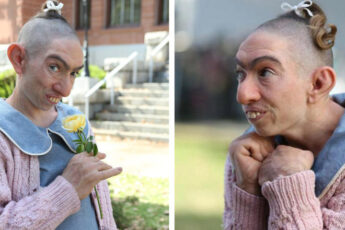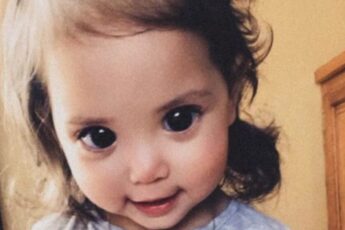Pandas are among the cutest animals on the planet. Pandas are known for their mischievousness, which made them a popular search category on the internet. Their distinctive black and white fur is known the world over. Pandas are also known for their playfulness and mischievousness. That made them a popular search category on the internet, writes bbc.co.uk.
 Compared to other bear species, they are known to be sedentary and lethargic, which makes them so attractive to humans. In many ways, these cute and fluffy bears are favourites.
Compared to other bear species, they are known to be sedentary and lethargic, which makes them so attractive to humans. In many ways, these cute and fluffy bears are favourites.
However, pandas are much more than what meets the eye, and that makes them fascinating creatures. As believed by the World Wildlife Federation, their black and white fur is a form of camouflage, with the white half used to hide in the snow and the black half to hide in the shadows. They also have an enlarged wrist bone that acts like a thumb and helps them hold onto objects. Their main food source is bamboo and they can eat for up to 16 hours at a time. Another fascinating fact is that they urinate while throwing themselves against a tree to leave their scent in a higher area!
In addition, pandas are almost always protected by their mother during the first month of their lives. The panda cub MinMin, born in 2016 in the Bifengxia Panda Reserve in Ya’an, China, had a long and painful birth because her cub was abnormally large. MinMin’s new baby frightened the zookeepers, who took the risk of taking the cub for a check-up. But when the puppy was returned to MinMin, there was apparently a problem.
 Remember to go to the end of this page to watch the whole film. In another video, MinMin is seen fighting for three days, which is unusual for a panda.
Remember to go to the end of this page to watch the whole film. In another video, MinMin is seen fighting for three days, which is unusual for a panda.
 According to the narrator, this is not a good omen, because it is a sign that after such long labour the baby may not be born alive. It is also risky for MinMin to stay in labour for so long. The narrator says: “Surviving a three-day labour is unheard of here, but she tries”, meaning that MinMin has beaten the odds by delaying labour. Amazingly, after a long and exhausting labour, MinMin gives birth to her beautiful baby boy. She picks him up and holds him.
According to the narrator, this is not a good omen, because it is a sign that after such long labour the baby may not be born alive. It is also risky for MinMin to stay in labour for so long. The narrator says: “Surviving a three-day labour is unheard of here, but she tries”, meaning that MinMin has beaten the odds by delaying labour. Amazingly, after a long and exhausting labour, MinMin gives birth to her beautiful baby boy. She picks him up and holds him.
Pandas are born hairless and almost blind, so they need constant care. According to the video, pandas have cubs that are smaller than their mother; the cubs are 1/900 the size of their mother, which is the size of a smurf. MyMin’s daughter is a very large cub, which made the birth particularly difficult for her, but in the end both mother and cub survived.
 Zoo staff took the young animal in to observe the newborn and make sure everything was OK. This was a problem, however, because MinMin might not have had enough time to get used to her new baby. The video below also suggests that MinMin’s baby might be rejected because the baby is covered in different smells. The panda cub got examined by the doctors and zoo staff thoroughly before returning it to MinMin, and concluded that it was born healthy and happy. Everyone worked hard to remove as much of the remaining smell from the cub as possible, but they were not able to remove everything. When the puppy was finally brought back to the facility, MinMin initially showed no interest in her new daughter.
Zoo staff took the young animal in to observe the newborn and make sure everything was OK. This was a problem, however, because MinMin might not have had enough time to get used to her new baby. The video below also suggests that MinMin’s baby might be rejected because the baby is covered in different smells. The panda cub got examined by the doctors and zoo staff thoroughly before returning it to MinMin, and concluded that it was born healthy and happy. Everyone worked hard to remove as much of the remaining smell from the cub as possible, but they were not able to remove everything. When the puppy was finally brought back to the facility, MinMin initially showed no interest in her new daughter.
 It’s a harrowing scene. You can hear the child screaming and crying for his mother, but no one responds or comforts him. “After all she’s been through, it’s very likely that MinMin is rejecting her child,” says the narrator. The animal comes closer, but MinMin doesn’t flinch. Zoo staff were concerned about this behaviour, but didn’t give up. Maybe MinMin just needed extra time to get used to the new situation and let her mother instincts kick in. The zoo staff tried something new. They emptied MinMin’s enclosure and made it more comfortable for her.
It’s a harrowing scene. You can hear the child screaming and crying for his mother, but no one responds or comforts him. “After all she’s been through, it’s very likely that MinMin is rejecting her child,” says the narrator. The animal comes closer, but MinMin doesn’t flinch. Zoo staff were concerned about this behaviour, but didn’t give up. Maybe MinMin just needed extra time to get used to the new situation and let her mother instincts kick in. The zoo staff tried something new. They emptied MinMin’s enclosure and made it more comfortable for her.
 The moment your child comes back to MyMin, something happens. She recognises the helpless child as her own and picks it up to hug it. It’s a beautiful turn of events. It’s a comfort to everyone at the zoo that the new mother has brought her baby back with her. We’re glad that MinMin’s maternal instinct allowed her to get close to her baby after such a difficult birth. Pandas were once considered endangered, but thanks to the combined efforts of protected areas and regulations that helped increase their numbers, they are now classified as “threatened”, showing that there is still a lot to do to save the species, as reported by the World Wildlife Federation.
The moment your child comes back to MyMin, something happens. She recognises the helpless child as her own and picks it up to hug it. It’s a beautiful turn of events. It’s a comfort to everyone at the zoo that the new mother has brought her baby back with her. We’re glad that MinMin’s maternal instinct allowed her to get close to her baby after such a difficult birth. Pandas were once considered endangered, but thanks to the combined efforts of protected areas and regulations that helped increase their numbers, they are now classified as “threatened”, showing that there is still a lot to do to save the species, as reported by the World Wildlife Federation.
 According to BBC Earth, half of all panda births are twins, but in the wild twins rarely survive as the mother almost always gives up on one cub when she has more, to give the more powerful cub the best chance of survival. Pandas can’t take care of two cubs because they don’t have enough milk or energy. However, thanks to zoos and reserves, the survival chances of twins have improved significantly. It contributed to an increase in panda numbers worldwide. At the Chengdu Research Base of Giant Panda Breeding in China, a mother who gave birth to twins was led to believe that she had only one child to increase both cubs chances of survival.
According to BBC Earth, half of all panda births are twins, but in the wild twins rarely survive as the mother almost always gives up on one cub when she has more, to give the more powerful cub the best chance of survival. Pandas can’t take care of two cubs because they don’t have enough milk or energy. However, thanks to zoos and reserves, the survival chances of twins have improved significantly. It contributed to an increase in panda numbers worldwide. At the Chengdu Research Base of Giant Panda Breeding in China, a mother who gave birth to twins was led to believe that she had only one child to increase both cubs chances of survival.
According to BBC Earth, this was not easy. The babies had to be replaced up to ten times a day to maintain the illusion of a single baby. While one baby spends a lot of time with its mother, the other baby is kept in an incubator and fed breast milk. It’s a difficult and time-consuming task, but it has resulted in a potential 100% survival rate for captive twins.






